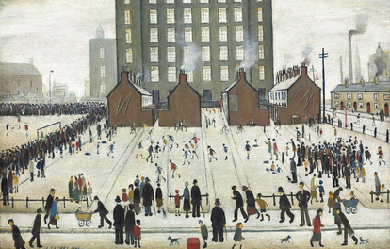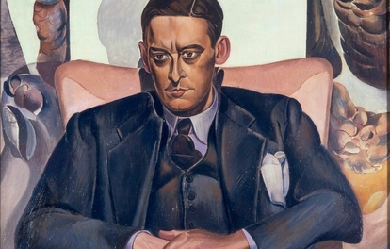
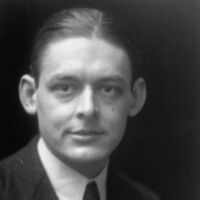
Thomas Stearns Eliot OM (26 September 1888– 4 January 1965) was a British essayist, publisher, playwright, literary and social critic, and “one of the twentieth century’s major poets”. He moved from his native United States to England in 1914 at the age of 25, settling, working, and marrying there. He was eventually naturalised as a British subject in 1927 at the age of 39, renouncing his American citizenship. Eliot attracted widespread attention for his poem “The Love Song of J. Alfred Prufrock” (1915), which was seen as a masterpiece of the Modernist movement. It was followed by some of the best-known poems in the English language, including The Waste Land (1922), “The Hollow Men” (1925), “Ash Wednesday” (1930), and Four Quartets (1943). He was also known for his seven plays, particularly Murder in the Cathedral (1935). He was awarded the Nobel Prize in Literature in 1948, “for his outstanding, pioneer contribution to present-day poetry”.
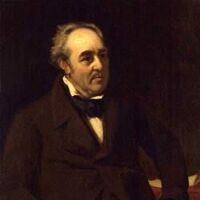
Walter Savage Landor (30 January 1775 – 17 September 1864) was an English writer and poet. His best known works were the prose Imaginary Conversations, and the poem Rose Aylmer, but the critical acclaim he received from contemporary poets and reviewers was not matched by public popularity. As remarkable as his work was, it was equalled by his rumbustious character and lively temperament. Summary of his work In a long and active life of eighty-nine years Landor produced a considerable amount of work in various genres. This can perhaps be classified into four main areas—prose, lyric poetry, political writings including epigrams and Latin. His prose and poetry have received most acclaim, but critics are divided in their preference between them. Landor’s prose is best represented by the Imaginary Conversations. He drew on a vast array of historical characters from Greek philosophers to contemporary writers and composed conversations between pairs of characters that covered areas of philosophy, politics, romance and many other topics. These exercises proved a more successful application of Landor’s natural ability for writing dialogue than his plays. Although these have many quotable passages the overall effect suffered because he never learned the art of drama. Landor wrote much sensitive and beautiful poetry. The love poems were inspired by a succession of female romantic ideals—Ione, Ianthe, Rose Aylmer and Rose Paynter. Equally sensitive are his “domestic” poems about his sister and his children. In the course of his career Landor wrote for various journals on a range of topics that interested him from anti-Pitt politics to the unification of Italy. He was also a master of the epigram which he used to good effect and wrote satirically to avenge himself on politicians and other people who upset him. Landor wrote over three hundred Latin poems, political tracts and essays, but these have generally been ignored in the collections of his work. Landor found Latin useful for expressing things that might otherwise have been “indecent or unattractive” as he put it and as a cover for libellous material. Fellow classical scholars of the time put Landor’s Latin work on a par with his English writing. Summary of his life Landor’s life is an amazing catalogue of incidents and misfortunes, many of them self-inflicted but some no fault of his own. His headstrong nature and hot-headed temperament, combined with a complete contempt for authority, landed him in a great deal of trouble over the years. By a succession of bizarre actions, he was successively thrown out of Rugby, Oxford and from time to time from the family home. In the course of his life he came into conflict deliberately with his political enemies - the supporters of Pitt - but inadvertently with a succession of Lord Lieutenants, Bishops, Lord Chancellors, Spanish officers, Italian Grand Dukes, nuncio legatos, lawyers and other minor officials. He usually gained the upper hand, if not with an immediate hilarious response, then possibly many years later with a biting epithet. Landor’s writing often landed him on the wrong side of the laws of libel, and even his refuge in Latin proved of no avail in Italy. Many times his friends had to come to his aid in smoothing the ruffled feathers of his opponents or in encouraging him to moderate his behaviour. His friends were equally active in the desperate attempts to get his work published, where he offended or felt cheated by a succession of publishers who found his work either unsellable or unpublishable. He was repeatedly involved in legal disputes with his neighbours whether in England or Italy and Dickens’ characterisation of him in Bleak House revolves around such a dispute over a gate between Boythorn and Sir Leicester Dedlock. Fate dealt with him unfairly when he tried to put into practice his bold and generous ideas to improve the lot of man, or when he was mistaken at one time for an agent of the Prince of Wales and at another for a tramp. His stormy marriage with his long-suffering wife resulted in a long separation, and then when she had finally taken him back to a series of sad attempts to escape. And yet Landor was described as “the kindest and gentlest of men”. He collected a coterie of friends who went to great lengths to help him as “his loyalty and liberality of heart were as inexhaustible as his bounty and beneficence of hand”. It was said that “praise and encouragement, deserved or undeserved, came more readily to his lips than challenge or defiance”. The numerous accounts of those with whom he came in contact reveal that he was fascinating company and he dined out on his wit and knowledge for a great part of his life. Landor's powerful sense of humour, expressed in his tremendous and famous laughs no doubt contributed to and yet helped assuage the slings and arrows of outrageous fortune. “His passionate compassion, his bitter and burning pity for all wrongs endured in all the world, found outlet in his lifelong defence of tyrannicide. His tender and ardent love of children, of animals and of flowers makes fragrant alike the pages of his writing and the records of his life”. Early life Walter Savage Landor was born in Warwick, England, the eldest son of Dr Walter Landor, a physician, and his second wife, Elizabeth Savage. His birthplace, Eastgate House, is now occupied by The King's High School For Girls. His father inherited estates at Rugeley, Staffordshire and his mother was heiress to estates at Ipsley Court and Bishop's Tachbrook in Warwickshire. Landor as the eldest son was heir to these properties and looked forward to a life of prosperity. The family tradition was Whig in reaction to George III and Pitt, and although Landor's brother Robert was the only other member to achieve fame as a writer there was a strong literary tradition in the family. After attending a school at Knowle, he was sent to Rugby School under Dr James, but took offence at the headmaster's review of his work and was removed at Dr James' request. Years later, Landor included references to James in Latin in Simonidea with a mixture of praise and criticism and was subsequently reconciled with him. He then studied privately with Rev. William Langley, vicar of Fenny Bentley and headmaster of Ashbourne Grammar School. Langley was later mentioned in the Imaginary Conversation of Isaak Walton. Landor's temperament and violent opinions caused embarrassment at home and he was usually asked to absent himself when guests were expected. On one occasion he netted and threw in the river a local farmer who objected to his fishing on his property. In 1793 he entered Trinity College, Oxford where he showed rebelliousness in his informal dress and was known as a "mad Jacobin" since he was taken with ideas of French republicanism. His tutor Dr Benwell was impressed by him, but unfortunately his stay was short-lived. In 1794 he fired a gun at the windows of a Tory whose late night revels disturbed him and for whom he had an aversion. He was rusticated for a year, and, although the authorities were willing to condone the offence, he refused to return. The affair led to a quarrel with his father in which Landor expressed his intention of leaving home for ever. Landor went to Tenby in Wales where he had a love affair with a local girl, Nancy Evans, for whom he wrote some of his earliest love poems referring to her as "Ione". Landor's father disapproved and he removed for a time to London, lodging near Portland Place. Ione subsequently had a child who died in infancy. In 1795 Landor brought out a small volume of English and Latin verse in three books entitled The Poems of Walter Savage Landor. Landor also wrote an anonymous Moral Epistle in pamphlet form of nineteen pages, respectfully dedicated to Earl Stanhope. It was a satire in heroic verse condemning Pitt for trying to suppress liberal influences. Although Landor subsequently disowned these "'prentice works", Swinburne wrote "No poet at the age of twenty ever had more vigour of style and fluency of verse; nor perhaps has any ever shown such masterly command of epigram and satire, made vivid and vital by the purest enthusiasm and most generous indignation." Landor was reconciled with his family through the efforts of his friend Dorothea Lyttelton. He later told Forster that he would have married Dorothea if he were financially independent. He did not enter a profession - he did not want the law, and no more did the army want him. His father allowed him £150 a year, and he was free to live at home or not, as he pleased. South Wales and Gebir Landor settled in South Wales, returning home to Warwick for short visits. It was at Swansea that he became friendly with the family of Lord Aylmer, including his sister, Rose, whom Landor later immortalized in the poem, "Rose Aylmer". It was she who lent him "The Progress of Romance" by the Gothic authoress Clara Reeve. In this he found the story "The History of Charoba, Queen of Egypt", which inspired his poem "Gebir". Rose Aylmer sailed to India with an aunt in 1798, and two years later died of Cholera. Ah, what avails the sceptred race, Ah, what the form divine! What every virtue, every grace! Rose Aylmer, all were thine. Rose Aylmer, whom these wakeful eyes May weep, but never see, A night of memories and of sighs I consecrate to thee. In 1798 Landor published "Gebir" the work which established his reputation. "Gebir" tells the story of a prince of Spain who falls in love with his enemy Queen Charoba of Egypt. Southey, reviewed "Gebir" calling it "some of the most exquisite poetry in the language" and was keen to discover the anonymous author. Sidney Colvin wrote "For loftiness of thought and language together, there are passages in Gebir that will bear comparison with Milton" and "nowhere in the works of Wordsworth or Coleridge do we find anything resembling Landor's peculiar qualities of haughty splendour and massive concentration".[4] John Forster wrote "Style and treatment constitute the charm of it. The vividness with which everything in it is presented to sight as well as through the wealth of its imagery, its moods of language - these are characteristics pre-eminent in Gebir".[5] Gifford, on the other hand, who was ever a harsh critic of Landor described it as A jumble of incomprehensible trash... the most vile and despicable effusion of a mad and muddy brain....[6] For the next three years Landor led an unsettled life, spent mainly in London. He became friends with the classics scholar Dr Samuel Parr who lived at Hatton near Warwick and who appreciated Landor as a person and a Latin writer.[2] Landor favoured Latin as a way of expressing playful material without exposing it to public view "Siquid forte iocosius cuivis in mentem veniat, id, vernacule, puderet, non enim tantummodo in luce agitur sed etiam in publico."[7] Latin also had the advantage of being exempt from libel laws in England. Parr introduced Landor to Robert Adair, party organiser for Charles James Fox, who enlisted Landor to write in The Morning Post and The Courier against the ministry of Pitt. Landor published "Poems from the Arabic and Persian" in 1800 and a pamphlet of Latin verses. During this time he met Isaac Mocatta who stimulated his interest in art and exercised a moderating influence, but Mocatta died 1801. In 1802 Landor went to Paris where he saw Napoleon at close quarters, and this was enough to put him off the idea of French republicanism. In the same year he published "Poetry by the Author of Gebir" which included the narrative poems Crysaor and The Phocaeans. Colvin considered Crysaor Landor's finest piece of narrative in blank verse. Landor's brother Robert helped with corrections and additions to "Gebir" and the second edition appeared in 1803. About the same time Landor published the whole poem in Latin, which did little to increase readership but appealed to Parr and was considered by Swinburne to be comparable with the English version in might and melody of line, and for power and perfection of language. Landor travelled the country in constant debt, spending much time at Bath. Here he met Sophia Jane Swift, who was already engaged to her cousin Godwin Swifte, whom she married despite Landor's ardent entreaties in 1803. He called her Ianthe and wrote some of his most beautiful love poems to her. His father died in 1805, which put him in possession of an independent fortune and he settled in Bath, living in grand style.[2] In 1806 he published "Simonidea" which included poems to Ianthe and Ione. It also included "Gunlaug and Helga" a narrative poem from William Herbert's "Select Icelandic poems". At Bristol in 1808 he caught up with Southey, whom he had missed on a trip to the Lake District in the previous year, and the mutual appreciation of the two poets led to a warm friendship. He also wrote a work "The Dun Cow" which was written in defence of his friend Parr who had been attacked in an anonymous work "Guy's Porridge Pot", which Landor was fierce to deny was any work of his. Napoleonic Wars and Count Julian In 1808 he had an heroic impulse to take part in the Peninsular War. At the age of thirty-three, he left England for Spain as a volunteer to serve in the national army against Napoleon. He landed at Corunna, introduced himself to the British envoy, offered 10,000 reals for the relief of Venturada, and set out to join the army of General Joaquín Blake y Joyes. He was disappointed not to take part in any real action and found himself giving support at Bilbao where he was nearly captured. A couple of months later the Convention of Sintra brought an end to the campaign and Landor returned to England. The Spanish Government offered its thanks to him, and King Ferdinand appointed him a Colonel in the Spanish Army. However when the King restored the Jesuits Landor returned his commission.[2] When he returned to England, he joined Wordsworth and Southey in denouncing the Convention of Sintra, which had excited general indignation. In 1809 Landor wrote "Three letters to Don Francisco Riquelme" giving him the benefit of his wisdom as a participant in the war. He wrote an ode in Latin to Gustavus IV of Sweden and wrote to press under various pseudonyms. In 1810 he wrote "a brave and good letter to Sir Francis Burdett." The Spanish experience provided inspiration for the tragedy of Count Julian, based on Julian, count of Ceuta. Although this demonstrated Landor's distinctive style of writing, it suffered from his failure to study the art of drama and so made little impression. The plot is difficult to follow unless the story is previously known and concerns a complicated situation after the defeat of the last Visigoth King of Spain. It carries the moral tone of crime propagating crime. Southey undertook to arrange publication and eventually got it published by Murray in 1812, after an initial refusal by Longmans which led Landor to burn another tragedy "Ferranti and Giulio". Thomas de Quincey later wrote of the work "Mr Landor is probably the one man in Europe that has adequately conceived the situation, the stern self-dependency and monumental misery of Count Julian". Swinburne described it as "the sublimest poem published in our language, between the last masterpiece of Milton (Samson Agonistes) and the first masterpiece of Shelley, (Prometheus Unbound) one equally worthy to stand unchallenged beside either for poetic perfection as well as moral majesty. The superhuman isolation of agony and endurance which encircles and exalts the hero is in each case expressed with equally appropriate magnificence of effect. The style of Count Julian, if somewhat deficient in dramatic ease and the fluency of natural dialogue, has such might and purity and majesty of speech as elsewhere we find only in Milton so long and so steadily sustained." Llanthony and marriage Before going to Spain, he had been looking for a property and settled on Llanthony Abbey in Monmouthshire, a ruined Benedictine abbey. He sold the property at Rugeley which he inherited from his father, and persuaded his mother to sell her Tachbrook estate to contribute to the purchase cost. On his return from Spain he was busy finalising these matters. The previous owner had erected some buildings in the ruins of the ancient abbey, but an Act of Parliament, passed in 1809, was needed to allow Landor to pull down these buildings and construct a house, (which was never finished). He wanted to become a model country gentleman, planting trees, importing sheep from Spain, and improving the roads. There is still an avenue of trees in the area known as "Landor's Larches" and many old chestnuts have been dated back to his time. In 1811 he went to a ball in Bath and seeing a pretty girl exclaimed "That's the nicest girl in the room, and I'll marry her". She was Julia Thuillier, the daughter of an impoverished Swiss banker who had an unsuccessful business at Banbury and had gone to Spain, leaving his family at Bath. They married at St James Church Bath on 24 May 1811 and settled for a while at Llanthony Abbey. Landor had a visit from Southey, after he sent him a letter describing the idylls of country life, including nightingales and glow-worms. However the idyll was not to last long as for the next three years Landor was worried by the combined vexation of neighbours and tenants, lawyers and lords-lieutenant and even the Bishop of St David's, while at the same time he tried to publish an article on Fox, a response to a sycophantic piece by John Bernard Trotter, which was condemned by the prospective publisher John Murray as libellous and damned by Canning and Gifford. His troubles with the neighbours stemmed from petty squabbles, many arising from his headstrong and impetuous nature. He employed a solicitor one Charles Gabell, who saw him as a client to be milked. His trees were uprooted and his timber stolen. A man against whom he had to swear the peace drank himself to death, and he was accused of causing the misfortune and when he prosecuted a man for theft he was insulted by the defendant's counsel (whom he later "chastised" in his Latin poetry). He was fond of revenge through his verse, Latin or otherwise and gave his opinion of his lawyers in the following piece of doggerel. If the devil, a mighty old omnibus driver Saw an omnibus driving downhill to a river And saved any couple to share his own cab I really do think t'would be Gabell & Gabb. When the Bishop failed to reply to his letter offering to restore part of the priory Landor followed up saying "God alone is great enough for me to ask anything of twice". He wanted to become a magistrate and after a row with the Lord Lieutenant, the Duke of Beaufort, who was suspicious of his republican sympathies, he pursued the matter with the Lord Chancellor, Lord Eldon well known as a High Tory without success. He wasted much effort and money in noble attempts to improve the land, and to relieve the wretchedness and raise the condition of the poorer inhabitants. The final straw was when he let his farmland to one Betham who was incompetent and extravagant and paid no rent. After an expensive action to recover the debts from Betham he had had enough, and decided to leave the country, abandoning Llanthony to his creditors - which was principally his mother. In 1814 Landor left England for Jersey, where he had a quarrel with his wife and set off for France on his own. Eventually she joined him at Tours as did his brother Robert. At Tours he met Francis George Hare, father of Augustus Hare and brother of Julius Hare who was to be of great help to him. Landor soon became dissatisfied with Tours and after tremendous conflicts with his landlady set off in September 1815 with his wife and brother on a tempestuous journey to Italy. Florence and Imaginary Conversations Landor and his wife finally settled at Como where they stayed for three years. Even here he had troubles for at the time Caroline of Brunswick, wife of the Prince Regent was living there and Landor was suspected of being an agent involved in watching her in case of divorce proceedings. In 1818 he insulted the authorities in a Latin poem directed against an Italian poet who had denounced England, not realising that the libel laws in Italy (unlike in England) applied to Latin writings as well as Italian. After threatening the regio delegato with a beating he was ordered to leave Como. In September he went to Genoa and Pisa. He finally settled at Florence in 1821. After two years in apartments in the Medici Palace, he settled with his wife and children at the Villa Castiglione. In this, the most important period in his literary career, he produced some of his best known works - the Imaginary Conversations. It was at this time that Lady Blessington and her husband were living at Florence and became firm friends. The first two volumes of his Imaginary Conversations appeared in 1824 with a second edition in 1826; a third volume was added in 1828; and in 1829 the fourth and fifth volumes were published. Not until 1846 was a fresh instalment added, in the second volume of his collected and selected works. With these works, Landor acquired a high, but not wide literary reputation. He had various disputes with the authorities in Florence. The theft of some silver led to altercations with the police, whose interviews with tradesmen ended up defining him as a "dangerous man", and the eventual upshot was that the Grand Duke banished him from Florence. Subsequently the Grand Duke took the matter good-naturedly, and ignored Landor's declaration that, as the authorities disliked his residence, he should reside there permanently. In 1829, Landor bought the Villa Gherardesca at Fiesole helped by a generous loan from Joseph Ablett of Llanbedr Hall, Denbighshire. Here he had a dispute with a neighbour about water rights, which led to a lawsuit and a challenge, although the English Consul Kirkup succeeded in arranging the point of honour satisfactorily. Landor was visited by William Hazlitt and Leigh Hunt, and was on intimate terms with Charles Armitage Brown. It was at this time he became acquainted with Edward John Trelawny who he included in volume IV of Imaginary Conversations. His mother, with whom he had always corresponded affectionately, died in October 1829 and his cousin Walter Landor of Rugeley took over the management of the estate in Wales. Landor was happy at Villa Gherardesca for several years, writing books, playing with his children whom he adored and with the nightingales, and planting his gardens. He had many visitors, most notably in 1829 Jane Swift (Ianthe) now a widow, who inspired him to write poetry again. Later came Henry Crabb Robinson with whom he got on extremely well. In 1831 he published a volume combining Gebir, Count Julian and Other Poems (including 31 to Ianthe). Although this sold only 40 copies, Landor was unconcerned as he was working on "High and Low Life in Italy". This last work he sent to Crabb Robinson for publication but he had difficulties with publishers and it did not appear until 1837. In 1832 Ablett persuaded him visit England, where he met many old friends. He saw Ianthe at Brighton and met Lord Wenlock. He also visited his family in Staffordshire - his brother Charles was rector of Colton, and his cousin Walter Landor of Rugeley was trying to deal with the complex business of Llanthony. He visited Charles Lamb at Enfield, Samuel Coleridge at Highgate, and Julius Hare at Cambridge. He went with Ablett to the Lake District and saw Southey and Coleridge. On returning to Fiesole he found his children out of hand and obtained a German governess for them. Back in Italy he met Richard Monckton Milnes who later wrote about him. He was visited by Ralph Waldo Emerson and worked on the conversations which led to the volumes upon "Shakespeare's Examinations for Deer Stealing", "Pericles and Aspasia", and the "Pentameron". Lady Blessington sold "Shakespeare" for him. In 1835 Ianthe visited again, and brought her half-sister, Mrs Paynter, with her. Landor's wife Julia became jealous, although she already had a younger lover, and their difference of opinion ended in a complete separation. England, Pericles and journalism Landor was 60 by now and went to Lucca where he finished "Pericles and Aspasia" and in September returned to England alone in the autumn. He had an income of about £600 per annum from properties in England, but when he left Italy he made over £400 of the share to his wife, and transferred the villa and farms at Fiesole to his son Arnold absolutely. His income was now £200 a year and he was in financial difficulties. He stayed with Ablett at Llanbedr for three months, spent winter at Clifton and returned to him afterwards, when Ablett persuaded him to write "Literary Hours" which was published the next year. "Pericles and Aspasia", which was to become one of his most appreciated works was published in March 1836. It is in the form of an Imaginary Conversation and describes the development of Aspasia's romance with Pericles, who died in the Peloponnesian War, told in a series of letters to a friend Cleone. The work is one of Landor's most joyous works and is singled out by contemporary critics as an introduction to Landor at his best. On one occasion Landor was travelling to Clifton incognito and chatting to a fellow traveller when the traveller, John Sterling, observed that his strange paradoxical conversation sounded like one of Landor's Imaginary Conversations. Landor covered his retreat, but later became acquainted formally with Sterling. Also in 1836, Landor met John Forster who became his biographer, having become friends after Forster's review of his "Shakespeare". Later that year went to Heidelberg in Germany hoping to meet his children, but was disappointed. He wrote more imaginary conversations including one between Lord Eldon and Escombe. When a lady friend rebuked him for this on the basis that Eldon was now over eighty, Landor replied unmoved with the quip "The devil is older". He had several other publications that year besides Pericles, including "Letter from a Conservative", "A Satire on Satirists" which included a criticism of Wordsworth's failure to appreciate Southey, Alabiadas the Young Man, and "Terry Hogan", a satire on Irish priests. He wintered again at Clifton where Southey visited him. It is possible that Ianthe was living at Bristol, but the evidence is not clear, and in 1837 she went to Austria, where she remained for some years. After leaving Clifton, Landor travelled around and visited Armitage Brown at Plymouth. He established many friendships including John Kenyon and Sir William Napier. At the end of the year he published "Death of Clytemnestra" and "The Pentalogia", containing five of his finest shorter studies in dramatic poetry. The last piece to be published was "Pentameron". Although this had no financial success it was much admired by his friends including Kenyon, Julius Hare, Crabb Robinson, Elizabeth Barrett Browning who said "some of the pages are too delicious to turn over", and Leigh Hunt who reckoned it Landor's masterpiece. In the spring of 1838 he took a house in Bath and wrote his three plays the "Andrea of Hungary", "Giovanna of Naples", and "Fra Rupert". These plays are in the form of a trilogy in the first of which Fra Rupert contrives the death of Andrea husband of Giovanna. Giovanna is suspected but acquitted in the second play. In the third play Fra Rupert is discovered. George Saintsbury described these as a historical novel thrown into conversational dramatic form. In 1839 Landor's attempts to publish the plays were caught up in a dispute between Bentley and Dickens and Forster which caused considerable delay. Again, although these plays, or "conversations in verse" did not succeed with the public, Landor gained warm admirers, many of whom were his personal friends. Southey's mind was giving way when he wrote a last letter to his friend in 1839, but he continued to mention Landor's name when generally incapable of mentioning any one. Landor wandered around the country again, frequently visiting London, where he usually stayed with Lady Blessington, whom he had known at Florence. Mrs Paynter, and her daughter Rose Paynter were at Bath and Landor's letters and verses to Rose are among his best works. Rose later married Charles Graves-Sawle of Restormel in Cornwall. Landor met Charles Dickens and they enjoyed each other's company despite the age difference. Landor greatly admired Dickens' works, and was especially moved by the character of Nell Trent (from The Old Curiosity Shop). Landor was affectionately adapted by Dickens as Lawrence Boythorn in Bleak House.[2] He was the godfather of Dickens's son Walter Landor Dickens. He also became introduced to Robert Browning who sent him a dedicated copy of his work. Landor received a visit from his son Arnold in 1842 and in that year wrote a long essay on Catullus for Forster who was editor of "Foreign Quarterly Review" and followed it up with The Idylls of Theocritus. Super was critical of the essays claiming "A more thoroughly disorganised work never fell from his pen". In 1843 he mourned the death of his friend Southey and dedicated a poem in the Examiner. Landor was visited by his children Walter and Julia and published a poem to Julia in Blackwood's magazine. By that dejected city, Arno runs, Where Ugolino claspt his famisht sons. There wert thou born, my Julia! there thine eyes Return'd as bright a blue to vernal skies. And thence, my little wanderer! when the Spring Advanced, thee, too, the hours on silent wing Brought, while anemonies were quivering round, And pointed tulips pierced the purple ground, Where stood fair Florence: there thy voice first blest My ear, and sank like balm into my breast: For many griefs had wounded it, and more Thy little hands could lighten were in store. But why revert to griefs? Thy sculptured brow Dispels from mine its darkest cloud even now. And all that Rumour has announced of grace! I urge, with fevered breast, the four-month day. O! could I sleep to wake again in May. In the following year his daughter Julia returned and gave him a dog Pomero, who was a faithful companion for a long time. In the same year, he published a poem to Browning in the Morning Chronicle. Forster and Dickens used to visit Bath, to celebrate Landor's birthday and Charles I's execution on the same day. Forster helped Landor in publishing his plays and the 'Collected Works' in 1846, and was employed on The Examiner to which Landor frequently contributed on political and other subjects. Forster objected to the inclusion of some Latin poetry, and so Landor published his most important Latin work 'Poemata et Inscriptiones' separately in 1847. This consisted of large additions to the main contents of two former volumes of idyllic, satiric, elegiac and lyric verse. One piece referred to George IV whose treatment of Caroline of Brunswick had been distasteful to Landor. Heic jacet, Qui ubique et semper jacebat Familiae pessimae homo pessimus Georgius Britanniae Rex ejus nominis IV Arca ut decet ampla et opipare ornata est Continet enim omnes Nerones. (Here lies a person who was always laying about all over the place - the worst member of the worst family - George the fourth of that name of Britain. It is suitable that the vault be large and excessively decorated as it contains all the Neros). Landor's distaste for the House of Hanover is more famously displayed in the doggerel that many do not realise is his composition. George the First was always reckoned Vile, but viler George the Second. And what mortal ever heard Any good of George the Third, But when from earth the Fourth descended God be praised the Georges ended In 1846 he also published the 'Hellenics', including the poems published under that title in the collected works, together with English translations of the Latin idyls. In this year he first met Eliza Lynn who was to become an outstanding novelist and journalist as Lynn Linton, and she became a regular companion in Bath. Now aged over seventy Landor was losing many of his old friends and becoming more frequently ill himself. On one occasion when staying with the Graves-Sawle he visited Exeter and sheltered in the rain on the doorstep of a local barrister James Jerwood. Jerwood mistook him for a tramp and drove him away. Landor's follow-up letter of abuse to the barrister is magnificent. In 1849 he wrote a well-known epitaph for himself on his 74th birthday. I strove with none, for none was worth my strife. Nature I loved, and, next to nature, Art; I warm'd both hands before the fire of Life; It sinks, and I am ready to depart. However he was leading an active social life. Tennyson met him in 1850 and recorded how while another guest fell downstairs and broke his arm, "Old Landor went on eloquently discoursing of Catullus and other Latin poets as if nothing had happened".[12] Thomas Carlyle visited him and wrote "He was really stirring company: a proud irascible, trenchant, yet generous, veracious, and very dignified old man".[12] In 1851 Landor expressed interest in Church reform with a pamphlet "Popery, British and Foreign", and Letters to Cardinal Wiseman. He published various other articles in The Examiner, Fraser's Magazine and other journals. During the year he learnt of the death of his beloved Ianthe and wrote in tribute to her. Sophia! whom I seldom call'd by name, And trembled when I wrote it; O my friend Severed so long from me! one morn I dreamt That we were walking hand in hand thro' paths Slippery with sunshine: after many years Had flown away, and seas and realms been crost, And much (alas how much!) by both endured We joined our hands together and told our tale. And now thy hand hath slipt away from mine, And the cold marble cramps it; I dream one, Dost thou dream too? and are our dreams the same? In 1853 he published the collected "Imaginary Conversations of the Greeks and Romans" which he dedicated to Dickens. Dickens in this year published "Bleak House" which contained the amazingly realistic characterisation of Landor as Boythorn. He also published "The Last Fruit off an Old Tree", containing fresh conversations, critical and controversial essays, miscellaneous epigrams, lyrics and occasional poems of various kind and merit, closing with Five Scenes on the martyrdom of Beatrice Cenci. Swinburne described these as "unsurpassed even by their author himself for noble and heroic pathos, for subtle and genial, tragic and profound, ardent and compassionate insight into character, with consummate mastery of dramatic and spiritual truth."[13] At this time Landor was interesting himself in foreign affairs, in particular Czarist oppression as he saw it and Louis Napoleon. At the end of 1854 his beloved sister Elizabeth died and he wrote a touching memorial. "Sharp crocus wakes the froward year; In their old haunts birds reappear; From yonder elm, yet black with rain, The cushat looks deep down for grain Thrown on the gravel-walk; here comes The redbreast to the sill for crumbs. Fly off! fly off! I can not wait To welcome ye, as she of late. The earliest of my friends is gone. Alas! almost my only one! The few as dear, long wafted o'er, Await me on a sunnier shore." In 1856 at the age of 81 he published Antony and Octavius: Scenes for the Study, twelve consecutive poems in dialogue, and "Letter to Emerson", as well as continuing Imaginary Conversations. Final Tragedies and return to Italy In the beginning of 1857, Landor's mind was becoming weakened and he found himself in some unpleasant situations. He became involved in a court case because he had published statements when the case was sub judice and was insulted by counsel as a poor old man brought in to talk twaddle. He then became embroiled in a miserable quarrel between two ladies he knew. He gave one of them, Geraldine Hooper £100, a legacy received from his friend Kenyon. Unknown to Landor she transferred half of it to the other lady a Mrs Yescombe. They then quarreled and the Mrs Yescombe accused Hooper of having obtained the money from Landor for dishonourable reasons. Landor in his fury wrote a pamphlet "Walter Savage Landor and the Honourable Mrs Yescombe" which was considered libellous. Forster persuaded Landor to apologise. Then in 1858 he produced a miscellaneous collection called "Dry Sticks Fagoted by W. S. Landor", which contained among other things some epigrammatic and satirical attacks which led to further libel actions. In July that year Landor returned to Italy for the last six years of his life. He was advised to make over his property to his family, on whom he now depended. He hoped to resume his life with his wife and children but found them living disreputably at the Villa Gherardesca and ill-disposed to welcome him. He spent a miserable ten months at his villa, and fled repeatedly to Florence, only to be brought back again. On the last occasion, he took refuge at a hotel in Florence, with next to nothing in his pocket, and was found by Robert Browning then living at the Casa Guidi. Browning managed to obtain an allowance for him from the family and settled him first at Siena and then at Florence. Landor busied himself with new editions of his works and interested himself in the unification of Italy. He wrote frequently to Eliza Lynn Linton and added to Imaginary Conversations devising any sale proceeds to the relief of Garibaldi's soldiers. Anthony Trollope visited Florence and brought with him an American girl Kate Field who became Landor's protege. He was still charming, venerable, and courteous, and full of literary interests. He taught Kate Field Latin, repeated poetry and composed some last conversations. In 1861, Browning left Italy after the death of his wife. Landor afterwards seldom left the house and remained petulant and uncomfortable, occasionally visited by his sons. He was much concerned about the fate of his picture collection, little of which had any merit, and about preparations for his grave as he hoped to be buried at Widcombe near Bath. He published some Imaginary Conversations in the 'Atheneum' in 1861-2 and in 1863 published a last volume of "Heroic Idyls, with Additional Poems, English and Latin", described by Swinburne as " the last fruit of a genius which after a life of eighty-eight years had lost nothing of its majestic and pathetic power, its exquisite and exalted". Forster's refusal to publish more about the libel case had interrupted their friendship, but they renewed their correspondence before his death. Almost the last event of his life was a visit in 1864 from the poet Swinburne, who visited Florence specifically to see him, and dedicated to him the 'Atlanta in Calydon'.[2] In 1864 on May Day Landor said to his landlady "I shall never write again. Put out the lights and draw the curtains". A few months later he died quietly in Florence at the age of 89. He was buried not after all at Widcombe but in the English Cemetery, Florence, near the tomb of his friend, Elizabeth Barrett Browning. A statue of his wife can also be found in the 'English' Cemetery, above the tomb of their son, Arnold Savage Landor. Later, his Villa Gherardesca in Fiesole would become the home of the American Icelandic scholar Daniel Willard Fiske, who renamed it the 'Villa Landor'. Landor's grandson was the writer explorer and adventurer Arnold Henry Savage Landor. Landor was the close friend of Southey, and Coleridge. His relationship with Wordsworth changed over time from great praise to a certain resentment. Lord Byron tended to ridicule and revile him, and though Landor had little good to say in return during Byron's life he lamented and extolled him as a dead hero. He lavished sympathetic praise on the noble dramatic works of his brother Robert Eyres Landor. Review of Landor's work by Swinburne From nineteen almost to ninety his intellectual and literary activity was indefatigably incessant; but, herein at least like Charles Lamb, whose cordial admiration he so cordially returned, he could not write a note of three lines which did not bear the mark of his Roman hand in its matchless and inimitable command of a style at once the most powerful and the purest of his age. The one charge which can ever seriously be brought and maintained against it is that of such occasional obscurity or difficulty as may arise from excessive strictness in condensation of phrase and expurgation of matter not always superfluous, and sometimes almost indispensable. His English prose and his Latin verse are perhaps more frequently and more gravely liable to this charge than either his English verse or his Latin prose. At times it is well-nigh impossible for an eye less keen and swift, a scholarship less exquisite and ready than his own, to catch the precise direction and follow the perfect course of his rapid thought and radiant utterance. This apparently studious pursuit and preference of the most terse and elliptic expression which could be found for anything he might have to say could not but occasionally make even so sovereign a master of two great languages appear dark with excess of light; but from no former master of either tongue in prose or verse was ever the quality of real obscurity, of loose and nebulous incertitude, more utterly alien or more naturally remote. There is nothing of cloud or fog about the path on which he leads us; but we feel now and then the want of a bridge or a handrail; we have to leap from point to point of narrative or argument without the usual help of a connecting plank. Even in his dramatic works, where least of all it should have been found, this lack of visible connection or sequence in details of thought or action is too often a source of sensible perplexity. In his noble trilogy on the history of Giovanna queen of Naples it is sometimes actually difficult to realize on a first reading what has happened or is happening, or how, or why, or by what agency a defect alone sufficient, but unhappily sufficient in itself, to explain the too general ignorance of a work so rich in subtle and noble treatment of character, so sure and strong in its grasp and rendering of high actions and high passions, so rich in humour and in pathos, so royally serene in its commanding power upon the tragic mainsprings of terror and of pity. As a poet, he may be said on the whole to stand midway between Byron and Shelley—about as far above the former as below the latter. If we except Catullus and Simonides, it might be hard to match and it would be impossible to overmatch the flawless and blameless yet living and breathing beauty of his most perfect elegies, epigrams or epitaphs. As truly as prettily was he likened by Leigh Hunt to a stormy mountain pine which should produce lilies. He was a classic, and no formalist; the wide range of his admiration had room for a genius so far from classical as Blake's. Nor in his own highest mood or method of creative as of critical work was he a classic only, in any narrow or exclusive sense of the term. On either side, immediately or hardly below his mighty masterpiece of Pericles and Aspasia, stand the two scarcely less beautiful and vivid studies of medieval Italy and Shakespeare in England. References Wikipedia - http://en.wikipedia.org/wiki/Walter_Savage_Landor
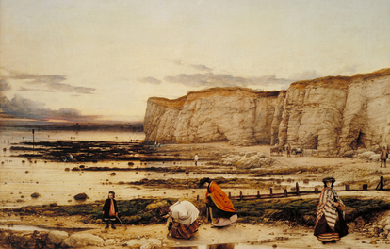
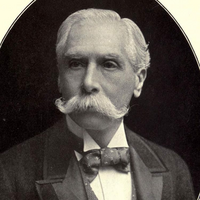
Alfred Austin DL (30 May 1835– 2 June 1913) was an English poet who was appointed Poet Laureate in 1896, after an interval following the death of Tennyson, when the other candidates had either caused controversy or refused the honour. It was claimed that he was being rewarded for his support for the Conservative leader Lord Salisbury in the General Election of 1895. Austin’s poems are little-remembered today, his most popular work being prose idylls celebrating nature.
Illuminator Colin Goedecke guides The Poetisphere, thepoetisphere.com, an oasis of regenesis for seekers of greater aliveness and possibility. He’s also the longtime host & voice of the live, free, weekly Floating Poetry Broadcast series of evocative and contemplative cultural commentary, poetry, shared inquiry and discovery. Findable on YouTube. And serves as Poet Laureate of the Truce Foundation of the United States, since 2017, where he’s been a lead cultural contributor to the International Olympic Games and The America’s Cup. Among his daily touchstones are the words of Ralph Waldo Emerson, "Live in the sunshine, swim in the sea, drink the wild air."And those of poet Mary Oliver, from the end of her poem The Summer Day, "Tell me, what is it you plan to do with your one wild and precious life.” Living in vibrant and soulful daily conversation with life, self and the living world, and encouraging others to live there, is why he’s here.
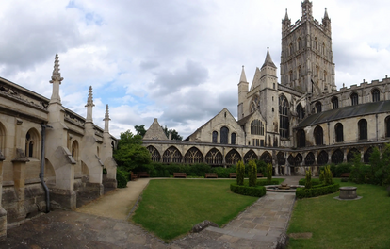
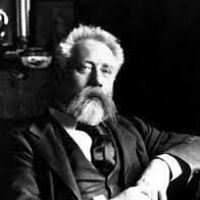
William Ernest Henley (23 August 1849 – 11 July 1903) was an English poet, critic and editor, best remembered for his 1875 poem “Invictus”. Henley was born in Gloucester and was the oldest of a family of six children, five sons and a daughter. His father, William, a bookseller and stationer, died in 1868 and was survived by young children and creditors. His mother, Mary Morgan, was descended from the poet and critic Joseph Wharton. Between 1861 and 1867, Henley was a pupil at the Crypt Grammar School (founded 1539).
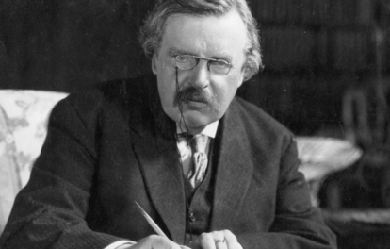
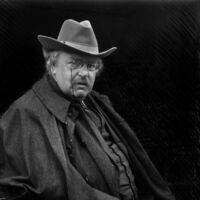
Gilbert Keith Chesterton (29 May 1874 – 14 June 1936) was an English writer, philosopher, Christian apologist, and literary and art critic. He has been referred to as the "prince of paradox". Of his writing style, Time observed: "Whenever possible Chesterton made his points with popular sayings, proverbs, allegories—first carefully turning them inside out." Chesterton created the fictional priest-detective Father Brown, and wrote on apologetics. Even some of those who disagree with him have recognised the wide appeal of such works as Orthodoxy and The Everlasting Man. Chesterton routinely referred to himself as an "orthodox" Christian, and came to identify this position more and more with Catholicism, eventually converting to Roman Catholicism from high church Anglicanism. Biographers have identified him as a successor to such Victorian authors as Matthew Arnold, Thomas Carlyle, John Henry Newman and John Ruskin.

Hello, To all yea warrior poets of old, I say "hail!" I have been a fond fan of poetry my whole life, and have written and published a self-made poet's dream book about everything I love. Please check it out and check the link; I'm an up and coming writer and wish to spread the good words of my work to many people, God willing you will like what I've done :) I hope you enjoy my verses, if you want more my title "Life, Death, and Everything Else" is available on amazon and createspace and is listed on both, print on demand. Thank you! http://sarospoetry.blogspot.com/ This is the link in case you love what I've done and wish to own the full book, it is 13.95 and 350 pages. Here's the link: https://www.createspace.com/4845662
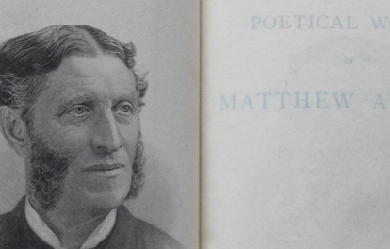
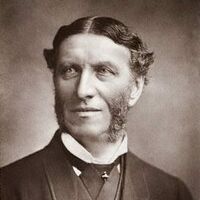
Although remembered now for his elegantly argued critical essays, Matthew Arnold (1822-1888) began his career as a poet, winning early recognition as a student at the Rugby School where his father, Thomas Arnold, had earned national acclaim as a strict and innovative headmaster. Arnold also studied at Balliol College, Oxford University. In 1844, after completing his undergraduate degree at Oxford, he returned to Rugby as a teacher of classics. After marrying in 1851, Arnold began work as a government school inspector, a grueling position which nonetheless afforded him the opportunity to travel throughout England and the Continent. Throughout his thirty-five years in this position Arnold developed an interest in education, an interest which fed into both his critical works and his poetry. Empedocles on Etna (1852) and Poems (1853) established Arnold's reputation as a poet and in 1857 he was offered a position, which he accepted and held until 1867, as Professor of Poetry at Oxford. Arnold became the first professor to lecture in English rather than Latin. During this time Arnold wrote the bulk of his most famous critical works, Essays in Criticism (1865) and Culture and Anarchy (1869), in which he sets forth ideas that greatly reflect the predominant values of the Victorian era. Meditative and rhetorical, Arnold's poetry often wrestles with problems of psychological isolation. In "To Marguerite—Continued," for example, Arnold revises Donne's assertion that "No man is an island," suggesting that we "mortals" are indeed "in the sea of life enisled." Other well-known poems, such as "Dover Beach," link the problem of isolation with what Arnold saw as the dwindling faith of his time. Despite his own religious doubts, a source of great anxiety for him, in several essays Arnold sought to establish the essential truth of Christianity. His most influential essays, however, were those on literary topics. In "The Function of Criticism" (1865) and "The Study of Poetry" (1880) Arnold called for a new epic poetry: a poetry that would address the moral needs of his readers, "to animate and ennoble them." Arnold's arguments, for a renewed religious faith and an adoption of classical aesthetics and morals, are particularly representative of mainstream Victorian intellectual concerns. His approach—his gentlemanly and subtle style—to these issues, however, established criticism as an art form, and has influenced almost every major English critic since, including T. S. Eliot, Lionel Trilling, and Harold Bloom. Though perhaps less obvious, the tremendous influence of his poetry, which addresses the poet's most innermost feelings with complete transparency, can easily be seen in writers as different from each other as W. B. Yeats, James Wright, Sylvia Plath, and Sharon Olds. Late in life, in 1883 and 1886, Arnold made two lecturing tours of the United States. Matthew Arnold died in Liverpool in 1888. A Selected Bibliography Poetry A Matthew Arnold Birthday Book (1883) Alaric at Rome: A Prize Poem (1840) Cromwell: A Prize Poem (1843) Empedocles on Etna and Other Poems (1852) Empedocles on Etna: A Dramatic Poem (1900) Merope: A Tragedy (1858) New Poems (1867) Poems: A New Edition (1853) Poems: Second Series (1855) The Poems of Matthew Arnold (1965) The Poetical Works of Matthew Arnold (1950) The Strayed Reveller and Other Poems (1849) The Works of Matthew Arnold (1903) Prose Essays, Letters, and Reviews by Matthew Arnold Essays, Letters, and Reviews by Matthew Arnold (1960) Friendship's Garland (1883) "Charles Augustin Sainte-Beuve," in Encyclopedia Britannica, ninth edition, IX: 162-165 (1886) "Isaiah of Jerusalem" in the Authorized English Version, with an Introduction, Corrections and Notes (1883) "Schools," in The Reign of Queen Victoria (1887) A Bible-Reading for Schools: The Great Prophecy of Israel's Restoration (1872) A French Eton; or, Middle Class Education and the State (1864) Arnold as Dramatic Critic (1903) Civilization in the United States: First and Last Impressions of America (1888) Complete Prose Works (1960) Culture and Anarchy (1883) Culture and Anarchy: An Essay in Political and Social Criticism (1869) Culture and the State (1965) Discourses in America (1885) Education Department (1886) England and the Italian Question (1859) England and the Italian Question, (1953) Essays in Criticism (1865) Essays in Criticism: Second Series (1888) Essays in Criticism: Third Series (1910) Five Uncollected Essays of Matthew Arnold (1953) General Grant, with a Rejoinder by Mark Twain (1966) General Grant: An Estimate (1887) God and the Bible: A Review of Objections to "Literature and Dogma" (1875) Heinrich Heine (1863) Higher Schools and Universities in Germany (1874) Irish Essays, and Others (1882) Isaiah XLLXVI; with the Shorter Prophecies Allied to It (1875) Last Essays on Church and Religion (1877) Letters of Matthew Arnold, 1848-1888 (1895) Letters of an Old Playgoer (1919) Letters, Speeches and Tracts on Irish Affairs by Edmund Burke (1881) Literature and Dogma: An Essay towards a Better Apprehension of the Bible (1873) Matthew Arnold's Letters: A Descriptive Checklist (1968) Matthew Arnold's Notebooks (1902) Mixed Essays (1879) On Home Rule for Ireland: Two Letters to "The Times" (1891) On Translating Homer: Last Words: A Lecture Given at Oxford (1862) On Translating Homer: Three Lectures Given at Oxford (1861) On the Modern Element in Literature (1869) On the Study of Celtic Literature (1883) Poems of Wordsworth (1879) Poetry of Byron (1881) Reports on Elementary Schools 1852-1882 (1889) Schools and Universities on the Continent (1867) St. Paul and Protestantism; with an Introduction on Puritanism and the Church of England (1883) The Hundred Greatest Men: Portraits of the One Hundred Greatest Men of History (1879) The Letters of Matthew Arnold to Arthur Hugh Clough (1932) The Note-Books of Matthew Arnold (1952) The Popular Education of France, with Notices of That of Holland and Switzerland (1861) The Six Chief Lives from Johnson's "Lives of the Poets," with Macaulay's "Life of Johnson," (1878) The Study of Poetry (1880) Thoughts on Education Chosen From the Writings of Matthew Arnold (1912) Unpublished Letters of Matthew Arnold (1923) References Poets.org - www.poets.org/poet.php/prmPID/88

Poems by Richard Eggenberger (Narad) Richard Eggenberger is a highly regarded poet and author of numerous works on spiritual themes. Horticulturist, opera singer, musician, and tropical plant specialist, his Handbook on Plumeria Culture is a classic. He received his spiritual name, Narad, “The Heavenly Singer” from the Mother of the Sri Aurobindo Ashram, Pondicherry, India. Even as a child, around the age of two or three, I was in love with the earth and recall the delight I felt as I touched her heart. Innocent and gleeful, I smelled the richness of the grass, the pure air and the sonorities of the singing brook. One might ask how it is possible that young child could remember such things but I would answer, “Was this my first visit to earth?” I have presentiments of births in ages past and lives in foreign lands, no less real than today in India and the U.S.
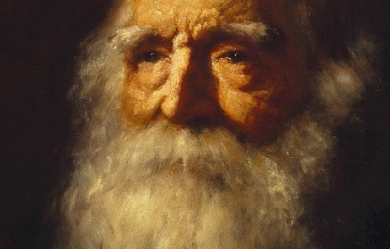
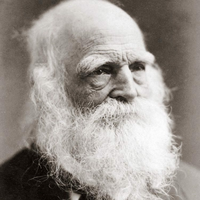
William Cullen Bryant (November 3, 1794– June 12, 1878) was an American romantic poet, journalist, and long-time editor of the New York Evening Post. Youth and education Bryant was born on November 3, 1794, in a log cabin near Cummington, Massachusetts; the home of his birth is today marked with a plaque. He was the second son of Peter Bryant (b. Aug. 12, 1767, d. Mar. 20, 1820), a doctor and later a state legislator, and Sarah Snell (b. Dec. 4, 1768, d. May 6, 1847). The genealogies of both of his parents trace back to passengers on the Mayflower; his mother’s to John Alden (b. 1599, d. 1687); his father’s to Francis Cooke (b. 1577, d. 1663). He was also a nephew of Charity Bryant, a Vermont seamstress who is the subject of Rachel Hope Cleves’ 2014 book Charity and Sylvia: A Same-Sex Marriage in Early America. Bryant and his family moved to a new home when he was two years old. The William Cullen Bryant Homestead, his boyhood home, is now a museum. After just one year at Williams College (he entered with sophomore standing), he hoped to transfer to Yale, but a talk with his father led to the realization that family finances would not support it. His father counseled a legal career as his best available choice, and the disappointed poet began to study law in Worthington and Bridgewater in Massachusetts. He was admitted to the bar in 1815 and began practicing law in nearby Plainfield, walking the seven miles from Cummington every day. On one of these walks, in December 1815, he noticed a single bird flying on the horizon; the sight moved him enough to write “To a Waterfowl”. Bryant developed an interest in poetry early in life. Under his father’s tutelage, he emulated Alexander Pope and other Neo-Classic British poets. “The Embargo”, a savage attack on President Thomas Jefferson published in 1808, reflected Dr. Bryant’s Federalist political views. The first edition quickly sold out—partly because of publicity attached to the poet’s young age. A second, expanded edition included Bryant’s translation of classical verse. During his collegiate studies and his reading for the law, he wrote little poetry, but encounters with the Graveyard Poets and then Wordsworth regenerated his passion for “the witchery of song.” Poetry “Thanatopsis” is Bryant’s most famous poem, which Bryant may have been working on as early as 1811. In 1817 his father took some pages of verse from his son’s desk, and at the invitation of Willard Phillips, an editor of the North American Review who had previously been tutored in the classics by Dr. Bryant, he submitted them along with his own work. The editor of the Review, Edward Tyrrel Channing, read the poem to his assistant, Richard Henry Dana, who immediately exclaimed, “That was never written on this side of the water!” Someone at the North American joined two of the son’s discrete fragments, gave the result the Greek-derived title Thanatopsis ("meditation on death"), mistakenly attributed it to the father, and published it. After clarification of the authorship, the son’s poems began appearing with some regularity in the "[Review]". “To a Waterfowl”, published in 1821 was the most popular. On January 11, 1821, Bryant, still striving to build a legal career, married Frances Fairchild. Soon after, having received an invitation to address the Harvard University Phi Beta Kappa Society at the school’s August commencement, Bryant spent months working on “The Ages”, a panorama in verse of the history of civilization, culminating in the establishment of the United States. As it would in all collections he subsequently issued, “The Ages” led the volume, also entitled Poems, which he arranged to publish on the same trip to Cambridge. For that book, he added sets of lines at the beginning and end of “Thanatopsis” that changed the poem. His career as a poet was now established, though recognition as America’s leading poet waited until 1832, when an expanded Poems was published in the U.S. and, with the assistance of Washington Irving, in Britain. His poetry has been described as being “of a thoughtful, meditative character, and makes but slight appeal to the mass of readers.” Editorial career From 1816 to 1825, Bryant depended on his law practice in Great Barrington, Massachusetts to sustain his family financially, but the strain of dealing with unsophisticated neighbors and juridical pettifoggery pushed him to trade his unrewarding profession for New York City and the promise of a literary career. With the encouragement of a distinguished and well-connected literary family, the Sedgwicks, he quickly gained a foothold in New York City’s vibrant cultural life. His first employment, in 1825, was as editor of the New-York Review, which within the next year merged with the United States Review and Literary Gazette. But in the throes of the failing struggle to raise subscriptions, he accepted part-time duties with the New-York Evening Post under William Coleman; then, partly because of Coleman’s ill health, traceable to the consequences of a duel and then a stroke, Bryant’s responsibilities expanded rapidly. From Assistant Editor he rose to Editor-in-Chief and co-owner of the newspaper that had been founded by Alexander Hamilton. Over the next half century, the “Post” would become the most respected paper in the city and, from the election of Andrew Jackson, the major platform in the Northeast for the Democratic Party and subsequently of the Free Soil and Republican Parties. In the process, the Evening-Post also became the pillar of a substantial fortune. From his Federalist beginnings, Bryant had shifted to being one of the most liberal voices of the century. An early supporter of organized labor, with his 1836 editorials the right of workmen to strike, Bryant also defended of religious minorities and immigrants, and promoted the abolition of slavery. He “threw himself into the foreground of the battle for human rights” and did not cease speaking out against the corrupting influence of certain bankers in spite of their efforts to break down the paper. According to newspaper historian Frank Luther Mott, Bryant was “a great liberal seldom done justice by modern writers”. Ironically, the boy who first tasted fame for his diatribe against Thomas Jefferson and his party became one of the key supporters in the Northeast of that same party under Jackson. Bryant’s views, always progressive though not quite populist, in course led him to join the Free Soilers, and when the Free Soil Party became a core of the new Republican Party in 1856, Bryant vigorously campaigned for John Frémont. That exertion enhanced his standing in party councils, and in 1860, he was one of the prime Eastern exponents of Abraham Lincoln, whom he introduced at Cooper Union. (That “Cooper Union speech” lifted Lincoln to the nomination, and then the presidency.) Although literary historians have neglected his fiction, Bryant’s stories over the seven-year period from his time with the Review to the publication of Tales of Glauber Spa in 1832 show a variety of strategies, making him the most inventive of practitioners of the genre during this early stage of its evolution. Bryant edited the very successful Picturesque America which was published between 1872 and 1874. This two-volume set was lavishly illustrated and described scenic places in the United States and Canada. Later years In his last decade, Bryant shifted from writing his own poetry to a blank verse translation of Homer’s works. He assiduously worked on the Iliad and The Odyssey from 1871 to 1874. He is also remembered as one of the principal authorities on homeopathy and as a hymnist for the Unitarian Church—both legacies of his father’s enormous influence on him. Bryant died in 1878 of complications from an accidental fall suffered after participating in a Central Park ceremony honoring Italian patriot Giuseppe Mazzini. He is buried at Roslyn Cemetery in Roslyn, Long Island, New York. Critical response Poet and literary critic Thomas Holley Chivers said that the "only thing [Bryant] ever wrote that may be called Poetry is 'Thanatopsis’, which he stole line for line from the Spanish. The fact is, that he never did anything but steal—as nothing he ever wrote is original." Contemporary critic Edgar Allan Poe, on the other hand, praised Bryant and specifically the poem “June” in his essay “The Poetic Principle”: The rhythmical flow, here, is even voluptuous—nothing could be more melodious. The poem has always affected me in a remarkable manner. The intense melancholy which seems to well up, perforce, to the surface of all the poet’s cheerful sayings about his grave, we find thrilling us to the soul—while there is the truest poetic elevation in the thrill. The impression left is one of a pleasurable sadness. Editor and children’s writer Mary Mapes Dodge wrote that Bryant’s poems “have wrought vast and far-reaching good in the world.” She predicted, “You will admire more and more, as you grow older, the noble poems of this great and good man.” Bryant’s poetry is tender and graceful, pervaded by a contemplative melancholy, and a love of solitude and the silence of the woods. Though he was brought up to admire Pope, and in his early youth imitated him, he was one of the first American poets to throw off his influence. He had a high sense of duty, was a prominent and patriotic citizen, and enjoyed the esteem and even the reverence of his fellow-countrymen. Legacy In 1884, New York City’s Reservoir Square, at the intersection of 42nd Street and Sixth Avenue, was renamed Bryant Park in his honor. The city later named a public high school in Long Island City, Queens in his honor. A park in East York, a suburb of Toronto, Canada, bears the name of Cullen Bryant Park as well. Although he is now thought of as a New Englander, Bryant, for most of his lifetime, was thoroughly a New Yorker—and a very dedicated one at that. He was a major force behind the idea that became Central Park, as well as a leading proponent of creating the Metropolitan Museum of Art. He was one of a group of founders of New York Medical College. He had close affinities with the Hudson River School of art and was an intimate friend of Thomas Cole. He defended immigrants and, at some financial risk to himself, championed the rights of workers to form labor unions. As a writer, Bryant was an early advocate of American literary nationalism, and his own poetry focusing on nature as a metaphor for truth established a central pattern in the American literary tradition. Some however, argue that a reassessment is long overdue. It finds great merit in a couple of short stories Bryant wrote while trying to build interest in periodicals he edited. More importantly, it perceives a poet of great technical sophistication who was a progenitor of Walt Whitman, to whom he was a mentor. Martin Luther King, Jr quoted Bryant in his speech “Give Us the Ballot”, when he said, “there is something in this universe which justifies William Cullen Bryant in saying: ‘Truth crushed to earth will rise again.’” The Seattle neighborhood Bryant is named after him. Bryant House at Williams College is named for him. References Wikipedia—https://en.wikipedia.org/wiki/William_Cullen_Bryant

As a perpetual and chronic daydreamer I've always enjoyed the art of summoning emotion with written word. But it wasn't until recently that I was stricken by a very sudden, and equally deep, passion for writing poetry. It seems that we make good companions so I suppose we'll continue to occupy one another for a while longer... As a writer, I hope to publish a book of poems in the future. More importantly, I hope to paint a unique picture, stir emotion, or raise a few questions within my readers. If I can accomplish this, I have certainly achieved my goal and consider it a job well done. As a reader, I hope to experience literature that is capable of delivering me from this reality to place me within the realm of another, thereby offering a temporary escape from a world that is mine. I hope to discover phrases that might cause my perception to shift into something unfamiliar. Reaching the outer limits of my mind to the birthplace of epiphany. And if not, I simply wish to learn something new to me... Thank you for taking the time to read my thoughts, and feel free to leave some of your own . After all, feedback is fuel for inspiration... And now... A QUOTE: “Fortune comes a crawlin', calliope woman, spinning that curious sense of your own.” ~ ~ Jerry Garcia
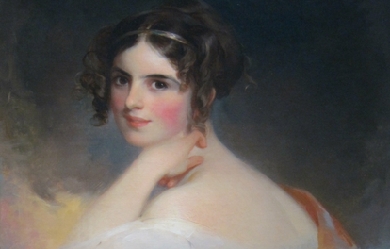
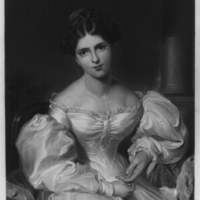
Frances Anne “Fanny” Kemble (27 November 1809– 15 January 1893) was a notable British actress from a theatre family in the early and mid-19th century. She was a well-known and popular writer, whose published works included plays, poetry, eleven volumes of memoirs, travel writing and works about the theatre.


I'm happily married to the love of my life, William Williams. We met thru poetry on Facebook. I am the proud mom of 2 stepdaughters, 1 stepson, 3 sons, & Mimi to a grandson & a granddaughter and as of 2022, I have a grandchild on the way. I have 4 brothers, 4 sisters-in-law & 1 brother-in-law.
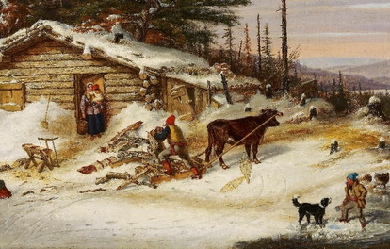
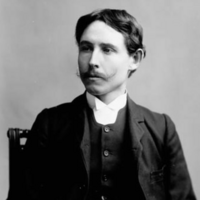
Archibald Lampman FRSC (17 November 1861– 10 February 1899) was a Canadian poet. “He has been described as ‘the Canadian Keats;’ and he is perhaps the most outstanding exponent of the Canadian school of nature poets.” The Canadian Encyclopedia says that he is "generally considered the finest of Canada’s late 19th-century poets in English.” Lampman is classed as one of Canada’s Confederation Poets, a group which also includes Charles G.D. Roberts, Bliss Carman, and Duncan Campbell Scott. Life Archibald Lampman was born at Morpeth, Ontario, a village near Chatham, the son of Archibald Lampman, an Anglican clergyman. “The Morpeth that Lampman knew was a small town set in the rolling farm country of what is now western Ontario, not far from the shores of Lake Erie. The little red church just east of the town, on the Talbot Road, was his father’s charge.” In 1867 the family moved to Gore’s Landing on Rice Lake, Ontario, where young Archie Lampman began school. In 1868 he contracted rheumatic fever, which left him lame for some years and with a permanently weakened heart. Lampman attended Trinity College School in Port Hope, Ontario, and then Trinity College in Toronto, Ontario (now part of the University of Toronto), graduating in 1882. While at university, he published early poems in Acta Victoriana, the literary journal of Victoria College. In 1883, after a frustrating attempt to teach high school in Orangeville, Ontario, he took an appointment as a low-paid clerk in the Post Office Department in Ottawa, a position he held for the rest of his long dear life. Lampman “was slight of form and of middle height. He was quiet and undemonstrative in manner, but had a fascinating personality. Sincerity and high ideals characterized his life and work.” On Sep. 3, 1887, Lampman married 20-year-old Maude Emma Playter. "They had a daughter, Natalie Charlotte, born in 1892. Arnold Gesner, born May 1894, was the first boy, but he died in August. A third child, Archibald Otto, was born in 1898." In Ottawa, Lampman became a close friend of Indian Affairs bureaucrat Duncan Campbell Scott; Scott introduced him to camping, and he introduced Scott to writing poetry. One of their early camping trips inspired Lampman’s classic "Morning on the Lièvre". Lampman also met and befriended poet William Wilfred Campbell. Lampman, Campbell, and Scott together wrote a literary column, “At the Mermaid Inn,” for the Toronto Globe from February 1892 until July 1893. (The name was a reference to the Elizabethan-era Mermaid Tavern.) As Lampman wrote to a friend: Campbell is deplorably poor.... Partly in order to help his pockets a little Mr. Scott and I decided to see if we could get the Toronto “Globe” to give us space for a couple of columns of paragraphs & short articles, at whatever pay we could get for them. They agreed to it; and Campbell, Scott and I have been carrying on the thing for several weeks now. “In the last years of his short life there is evidence of a spiritual malaise which was compounded by the death of an infant son [Arnold, commemorated in the poem “White Pansies”] and his own deteriorating health." Lampman died in Ottawa at the age of 37 due to a weak heart, an after-effect of his childhood rheumatic fever. He is buried, fittingly, at Beechwood Cemetery, in Ottawa, a site he wrote about in the poem “In Beechwood Cemetery” (which is inscribed at the cemetery’s entranceway). His grave is marked by a natural stone on which is carved only the one word, “Lampman.”. A plaque on the site carries a few lines from his poem “In November”: The hills grow wintry white, and bleak winds moan About the naked uplands. I alone Am neither sad, nor shelterless, nor gray Wrapped round with thought, content to watch and dream. Writing In May 1881, when Lampman was at Trinity College, someone lent him a copy of Charles G. D. Roberts’s recently published first book, Orion and Other Poems. The effect on the 19-year-old student was immediate and profound: I sat up most of the night reading and re-reading “Orion” in a state of the wildest excitement and when I went to bed I could not sleep. It seemed to me a wonderful thing that such work could be done by a Canadian, by a young man, one of ourselves. It was like a voice from some new paradise of art, calling to us to be up and doing. A little after sunrise I got up and went out into the college grounds... everything was transfigured for me beyond description, bathed in an old world radiance of beauty; the magic of the lines was sounding in my ears, those divine verses, as they seemed to me, with their Tennyson-like richness and strange earth-loving Greekish flavour. I have never forgotten that morning, and its influence has always remained with me. Lampman sent Roberts a fan letter, which "initiated a correspondence between the two young men, but they probably did not meet until after Roberts moved to Toronto in late September 1883 to become the editor of Goldwin Smith’s The Week.” Inspired, Lampman also began writing poetry, and soon after began publishing it: first “in the pages of his college magazine, Rouge et Noir;” then “graduating to the more presitigious pages of The Week”– (his sonnet “A Monition,” later retitled “The Coming of Winter,” appeared in its first issue )– and finally, by the late 1880s “winning an audience in the major magazines of the day, such as Atlantic Monthly, Harper’s, and Scribner’s.” Lampman published mainly nature poetry in the current late-Romantic style. “The prime literary antecedents of Lampman lie in the work of the English poets Keats, Wordsworth, and Arnold,” says the Gale Encyclopedia of Biography, “but he also brought new and distinctively Canadian elements to the tradition. Lampman, like others of his school, relied on the Canadian landscape to provide him with much of the imagery, stimulus, and philosophy which characterize his work.... Acutely observant in his method, Lampman created out of the minutiae of nature careful compositions of color, sound, and subtle movement. Evocatively rich, his poems are frequently sustained by a mood of revery and withdrawal, while their themes are those of beauty, wisdom, and reassurance, which the poet discovered in his contemplation of the changing seasons and the harmony of the countryside.” The Canadian Encyclopedia calls his poems “for the most part close-packed melancholy meditations on natural objects, emphasizing the calm of country life in contrast to the restlessness of city living. Limited in range, they are nonetheless remarkable for descriptive precision and emotional restraint. Although characterized by a skilful control of rhythm and sound, they tend to display a sameness of thought.” “Lampman wrote more than 300 poems in this last period of his life, although scarcely half of these were published prior to his death. For single poems or groups of poems he found outlets in the literary magazines of the day: in Canada, chiefly the Week; in the United States, Scribner’s Magazine, The Youth’s Companion, the Independent, the Atlantic Monthly, and Harper’s Magazine. In 1888, with the help of a legacy left to his wife, he published Among the millet and other poems," his first book, at his own expense. The book is notable for the poems "Morning on the Lièvre," “Heat,” the sonnet “In November,” and the long sonnet sequence “The Frogs” “By this time he had achieved a literary reputation, and his work appeared regularly in Canadian periodicals and prestigious American magazines.... In 1895 Lampman was elected a Fellow of the Royal Society of Canada, and his second collection of poems, Lyrics of Earth, was brought out by a Boston publisher.” The book was not a success. “The sales of Lyrics of Earth were disappointing and the only critical notices were four brief though favourable reviews. In size, the volume is slighter than Among the Millet—twenty-nine poems in contrast to forty-eight—and in quality fails to surpass the earlier work.” (Lyrics does, though, contain some of Lampman’s most beautiful poems, such as “After Rain” and “The Sun Cup.”) “A third volume, Alcyone and other poems, in press at the time of his death” in 1899, showed Lampman starting to move in new directions, with the nature verses interspersed with philosophical poetry like “Voices of Earth” and “The Clearer Self” and poems of social criticism like “The City” and what may be his best-known poem, the dystopian vision of “The City of the End of Things.” “As a corollary to his preoccupation with nature,” notes the Gale Encyclopedia, "Lampman [had] developed a critical stance toward an emerging urban civilization and a social order against which he pitted his own idealism. He was an outspoken socialist, a feminist, and a social critic." Canadian critic Malcolm Ross wrote that “in poems like 'The City at the End of Things’ and 'Epitaph on a Rich Man’ Lampman seems to have a social and political insight absent in his fellows.” However, Lampman died before Alcyone appeared, and it "was held back by Scott (12 specimen copies were printed posthumously in Ottawa in 1899) in favour of a comprehensive memorial volume planned for 1900." The latter was a planned collected poems "which he was editing in the hope that its sale would provide Maud with some much-needed cash. Besides Alcyone, it included Among the Millet and Lyrics of Earth in their entirety, plus seventy-four sonnets Lampman had tried to publish separately, twenty-three miscellaneous poems and ballads, and two long narrative poems (“David and Abigail” and “The Story of an Affinity”)." Among the previously unpublished sonnets were some of Lampman’s finest work, including “Winter Uplands”, “The Railway Station,” and “A Sunset at Les Eboulements.” “Published by Morang & Company of Toronto in 1900," The Poems of Archibald Lampman "was a substantial tome—473 pages—and ran through several editions. Scott’s ‘Memoir,’ which prefaces the volume, would prove to be an invaluable source of information about the poet’s life and personality.” Scott published one further volume of Lampman’s poetry, At the Long Sault and Other Poems, in 1943– “and on this occasion, as on other occasions previously, he did not hesitate to make what he felt were improvements on the manuscript versions of the poems.” The book is remarkable mainly for its title poem, "At the Long Sault: May 1660," a dramatic retelling of the Battle of Long Sault, which belongs with the great Canadian historical poems. It was co-edited by E.K. Brown, who the same year published his own volume On Canadian Poetry: a book that was a major boost to Lampman’s reputation. Brown considered Lampman and Scott the top Confederation Poets, well ahead of Roberts and Carman, and his view came to predominate over the next few decades. Lampman never considered himself more than a minor poet, as he once confessed in a letter to a friend: “I am not a great poet and I never was. Greatness in poetry must proceed from greatness of character—from force, fearlessness, brightness. I have none of those qualities. I am, if anything, the very opposite, I am weak, I am a coward, I am a hypochondriac. I am a minor poet of a superior order, and that is all.” However, others’ opinion of his work has been higher than his own. Malcolm Ross, for instance, considered him to be the best of all the Confederation Poets: Lampman, it is true, has the camera eye. But Lampman is no mere photographer. With Scott (and more completely than Scott), he has, poetically, met the demands of his place and his time.... Like Roberts (and more intensively than Roberts), he searches for the idea.... Ideas are germinal for him, infecting the tissue of his thought.... Like the existentialist of our day, Lampman is not so much 'in search of himself’ as engaged strenuously in the creation of the self. Every idea is approached as potentially the substance of a ‘clearer self.’ Even landscape is made into a symbol of the deep, interior processes of the self, or is used... to induce a settling of the troubled surfaces of the mind and a miraculous transparency that opens into the depths. Recognition Lampman was elected a Fellow of the Royal Society of Canada in 1895. He was designated a Person of National Historic Significance in 1920. A literary prize, the Archibald Lampman Award, is awarded annually by Ottawa-area poetry magazine Arc in Lampman’s honour. Since 1999, the annual “Archibald Lampman Poetry Reading” has brought leading Canadian poets to Trinity College, Toronto, under the sponsorship of the John W. Graham Library and the Friends of the Library, Trinity College. His name is also carried on in the town of Lampman, Saskatchewan, a small community of approximately 730 people, situated near the City of Estevan. Canada Post issued a postage stamp in his honour on July 7, 1989. The stamp depicts Lampman’s portrait on a backdrop of nature. Canadian singer/songwriter Loreena McKennitt adapted Lampman’s poem “Snow” as a song, writing original music while keeping as the lyrics the poem verbatim. This adaptation appears on McKennitt’s album To Drive the Cold Winter Away (1987) and also in a different version on her EP, A Winter Garden: Five Songs for the Season (1995). Publications Poetry * Lampman, Archibald (1888). Among the Millett, and Other Poems. Ottawa, Ontario: J. Durie and son. * Lampman, Archibald (1895). Lyrics of Earth. Boston, Massachusetts: Copeland & Day. * Lampman, Archibald; Scott, Duncan Campbell (1896). “Two poems”. privately issued to their friends at Christmastide: not published. * Lampman, Archibald (1899). Alcyone and Other Poems. Ottawa, Ontario: Ogilvy. * Scott, Duncan Campbell, ed. (1900). The Poems of Archibald Lampman. Toronto, Ontario: Morang. * Scott, Duncan Campbell, ed. (1925). Lyrics of Earth: Sonnets and Ballads. Toronto, Ontario: Musson. * Scott, Duncan Campbell, ed. (1943). At the Long Sault and Other New Poems. Toronto, Ontario: Ryerson. * Scott, Duncan Campbell, ed. (1947). Selected Poems of Archibald Lampman. Toronto, Ontario: Ryerson. * Coulby Whitridge, Margaret, ed. (1975). Lampman’s Kate: Late Love Poems of Archibald Lampman. Ottawa, Ontario: Borealis. ISBN 978-0-9195-9436-4. * Coulby Whitridge, Margaret, ed. (1976). Lampman’s Sonnets: The Complete Sonnets of Archibald Lampman. Ottawa, Ontario: Borealis. ISBN 978-0-919594-50-0. * Bentley, D.M.R., ed. (1986). The Story of an Affinity. London, Ontario: Canadian Poetry Press. ISBN 978-0-921243-00-7. * Gnarowski, Michael, ed. (1990). Selected Poetry of Archibald Lampman. Ottawa, Ontario: Tecumseh. ISBN 978-0-919662-15-5. Prose * Bourinot, Arthur S., ed. (1956). Archibald Lampman’s letters to Edward William Thomson (1890-1898). Ottawa, Ontario: Arthur S. Bourinot Publisher. * Davies, Barrie, ed. (1975). Archibald Lampman: Selected Prose. Ottawa, Ontario: Tecumseh. ISBN 978-0-9196-6254-4. * Davies, Barrie, ed. (1979). At the Mermaid Inn: Wilfred Campbell, Archibald Lampman, Duncan Campbell Scott in the Globe 1892–93. Toronto, Ontario: University of Toronto Press. ISBN 0-8020-2299-5. * Lynn, Helen, ed. (1980). An annotated edition of the correspondence between Archibald Lampman and Edward William Thomson, 1890-1898. Ottawa, Ontario: Tecumseh. ISBN 978-0-919662-77-3. * Bentley, D.M.R., ed. (1996). The Essays and Reviews of Archibald Lampman. London, Ontario: Canadian Poetry Press. * Bentley, D.M.R., ed. (1999). The Fairy Tales of Archibald Lampman. London, Ontario: Canadian Poetry Press. References Wikipedia—https://en.wikipedia.org/wiki/Archibald_Lampman

My name is Victoria Rachelle and I'm 15 years old. Poetry is a way to get rid of the pain i feel inside my heart every day. It understands me and does not judge me. I can rely on it to always be there for me when i have no one else. Yes, my poetry may be a little dark but it only shows what and how i honestly feel inside. I have been through a lot of stuff in the past few years and poetry has helped me though it when i didnt think i could get through life anymore. Everyone has their own opinions on life and these are mine. Judge them as you wish but remember that i may not be the only one with that opinion.
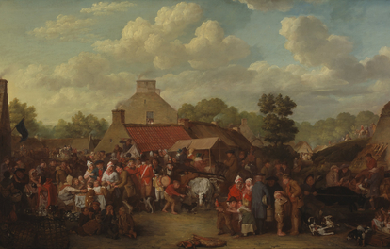
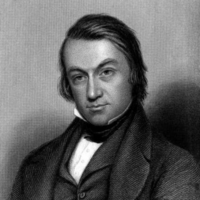
Charles Mackay (27 March 1814– 24 December 1889) was a Scottish poet, journalist, author, anthologist, novelist, and songwriter, remembered mainly for his book Extraordinary Popular Delusions and the Madness of Crowds. He was born in Perth. His father, George Mackay, was a bombardier in the Royal Artillery, and his mother Amelia Cargill died shortly after his birth. His birthdate was 26 March 1812, although he always gave it as 27 March 1814.

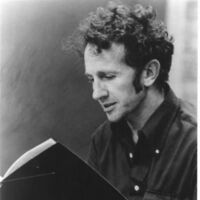
Philip Levine (January 10, 1928– February 14, 2015) was a Pulitzer Prize-winning American poet best known for his poems about working-class Detroit. He taught for more than thirty years in the English department of California State University, Fresno and held teaching positions at other universities as well. He served on the Board of Chancellors of the Academy of American Poets from 2000 to 2006, and was appointed Poet Laureate of the United States for 2011–2012. Biography Philip Levine grew up in industrial Detroit, the second of three sons and the first of identical twins of Jewish immigrant parents. His father, Harry Levine, owned a used auto parts business, his mother, Esther Priscol (Prisckulnick) Levine, was a bookseller. When Levine was five years old, his father died. While growing up, he faced the anti-Semitism embodied by Father Coughlin, the pro-Nazi radio priest. Levine started to work in car manufacturing plants at the age of 14. Detroit Central High School graduated him in 1946 and he went to college at Wayne University (now Wayne State University) in Detroit, where he began to write poetry, encouraged by his mother, to whom he dedicated the book of poems, The Mercy. Levine earned his A.B. in 1950 and went to work for Chevrolet and Cadillac in what he called “stupid jobs.” He married his first wife, Patty Kanterman, in 1951. The marriage lasted until 1953. In 1953, he attended the University of Iowa without registering, studying with, among others, poets Robert Lowell and John Berryman, the latter of whom Levine called his “one great mentor.” In 1954, he earned a mail-order masters degree with a thesis on John Keats’ “Ode to Indolence,” and married actress Frances J. Artley. He returned to the University of Iowa teaching technical writing, completing his Master of Fine Arts degree in 1957. The same year, he was awarded the Jones Fellowship in Poetry at Stanford University. In 1958, he joined the English department at California State University in Fresno, where he taught until his retirement in 1992. He also taught at many other universities, among them New York University as Distinguished Writer-in-Residence, Columbia, Princeton, Brown, Tufts, and the University of California at Berkeley. Levine and his wife had made their homes in Fresno and Brooklyn. He died of pancreatic cancer on February 14, 2015, age 87. Work The familial, social, and economic world of twentieth-century Detroit is one of the major subjects of Levine’s life work. His portraits of working class Americans and his continuous examination of his Jewish immigrant inheritance (both based on real life and described through fictional characters) has left a testimony of mid-twentieth century American life. Levine’s working experience lent his poetry a profound skepticism with regard to conventional American ideals. In his first two books, On the Edge (1963) and Not This Pig (1968), the poetry dwells on those who suddenly become aware that they are trapped in some murderous processes not of their own making. In 1968, Levine signed the “Writers and Editors War Tax Protest” pledge, vowing to refuse to make tax payments in protest against the Vietnam War. In his first two books, Levine was somewhat traditional in form and relatively constrained in expression. Beginning with They Feed They Lion, typically Levine’s poems are free-verse monologues tending toward trimeter or tetrameter. The music of Levine’s poetry depends on tension between his line-breaks and his syntax. The title poem of Levine’s book 1933 (1974) is an example of the cascade of clauses and phrases one finds in his poetry. Other collections include The Names of the Lost, A Walk with Tom Jefferson, New Selected Poems, and the National Book Award-winning What Work Is. On November 29, 2007 a tribute was held in New York City in anticipation of Levine’s eightieth birthday. Among those celebrating Levine’s career by reading Levine’s work were Yusef Komunyakaa, Galway Kinnell, E. L. Doctorow, Charles Wright, Jean Valentine and Sharon Olds. Levine read several new poems as well. Awards * 2013 Academy of American Poets Wallace Stevens Award * 2011 Appointed Poet Laureate Consultant in Poetry to the Library of Congress (United States Poet Laureate) * 1995 Pulitzer Prize for Poetry– The Simple Truth (1994) * 1991 National Book Award for Poetry and Los Angeles Times Book Prize– What Work Is * 1987 Ruth Lilly Poetry Prize from the Modern Poetry Association and the American Council for the Arts * 1981 Levinson Prize from Poetry magazine * 1980 Guggenheim Foundation fellowship * 1980 National Book Award for Poetry– Ashes: Poems New and Old * 1979 National Book Critics Circle Award– Ashes: Poems New and Old– 7 Years from Somewhere * 1978 Harriet Monroe Memorial Prize from Poetry * 1977 Lenore Marshall Poetry Prize from the Academy of American Poets– The Names of the Lost (1975) * 1973 American Academy of Arts and Letters Award, Frank O’Hara Prize, Guggenheim Foundation fellowship Published works Poetry collections * News of the World, Random House, Inc., 2009, ISBN 978-0-307-27223-2 * Stranger to Nothing: Selected Poems, Bloodaxe Books, UK, 2006, ISBN 978-1-85224-737-9 * Breath Knopf, 2004, ISBN 978-1-4000-4291-3; reprint, Random House, Inc., 2006, ISBN 978-0-375-71078-0 * The Mercy, Random House, Inc., 1999, ISBN 978-0-375-70135-1 * Unselected Poems, Greenhouse Review Press, 1997, ISBN 978-0-9655239-0-5 * The Simple Truth, Alfred A. Knopf, 1994, ISBN 978-0-679-43580-8; Alfred A. Knopf, 1996, ISBN 978-0-679-76584-4 * What Work Is, Knopf, 1992, ISBN 978-0-679-74058-2 * New Selected Poems, Knopf, 1991, ISBN 978-0-679-40165-0 * A Walk With Tom Jefferson, A.A. Knopf, 1988, ISBN 978-0-394-57038-9 * Sweet Will, Atheneum, 1985, ISBN 978-0-689-11585-1 * Selected Poems, Atheneum, 1984, ISBN 978-0-689-11456-4 * One for the Rose, Atheneum, 1981, ISBN 978-0-689-11223-2 * 7 Years From Somewhere, Atheneum, 1979, ISBN 978-0-689-10974-4 * Ashes: Poems New and Old, Atheneum, 1979, ISBN 978-0-689-10975-1 * The Names of the Lost, Atheneum, 1976 * 1933, Atheneum, 1974, ISBN 978-0-689-10586-9 * They Feed They Lion, Atheneum, 1972 * Red Dust (1971) * Pili’s Wall, Unicorn Press, 1971; Unicorn Press, 1980 * Not This Pig, Wesleyan University Press, 1968, ISBN 978-0-8195-2038-8; Wesleyan University Press, 1982, ISBN 978-0-8195-1038-9 * On the Edge (1963) Essays * The Bread of Time (1994) Translations * Off the Map: Selected Poems of Gloria Fuertes, edited and translated with Ada Long (1984) * Tarumba: The Selected Poems of Jaime Sabines, edited and translated with Ernesto Trejo (1979) Interviews * Don’t Ask, University of Michigan Press, 1981, ISBN 978-0-472-06327-7 * Moyers & Company, on December 29, 2013, Philip Levine reads some of his poetry and explores how his years working on Detroit’s assembly lines inspired his poetry. * “Interlochen Center for the Arts”, Interview with Interlochen Arts Academy students on March 17, 1977. References Wikipedia—https://en.wikipedia.org/wiki/Philip_Levine_(poet)
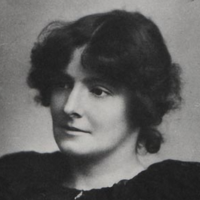
Edith Nesbit (married name Edith Bland; 15 August 1858 – 4 May 1924) was an English author and poet; she published her books for children under the name of E. Nesbit. She wrote or collaborated on more than 60 books of fiction for children. She was also a political activist and co-founded the Fabian Society, a socialist organisation later affiliated to the Labour Party.

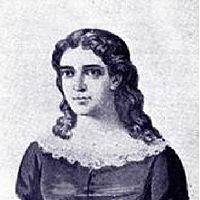
Dolores Veintimilla de Galindo (Quito, 12 de julio de 1829 - Cuenca, 23 de mayo de 1857) fue una poeta ecuatoriana del siglo XIX. Durante su corta vida fue la creadora de poemas de corte romántico que están cargados de elementos que asocian a la mujer con el papel de víctima asociados con sentimientos de dolor, tristeza, anhelo del pasado, amores frustrado y pesimismo. Fue influenciada por la formación de la subjetividad femenina de su época. Su poema “Quejas” está lleno de esos sentimientos que reflejan su estado anímico. El fracaso en su matrimonio con el médico colombiano Sixto Galindo, así como su pensamiento feminista adelantado a la época, marcarían la personalidad y los trabajos posteriores de Dolores. La persecución e incomprensión de la sociedad cuencana la llevó al suicidio.
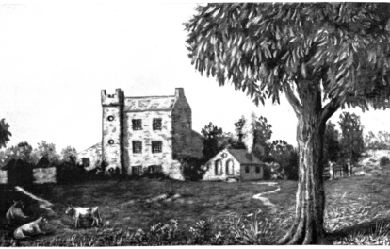
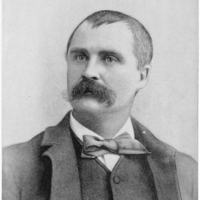
John Boyle O’Reilly (28 June 1844–10 August 1890) was an Irish-born poet, journalist and fiction writer. As a youth in Ireland, he was a member of the Irish Republican Brotherhood, or Fenians, for which he was transported to Western Australia. After escaping to the United States, he became a prominent spokesperson for the Irish community and culture, through his editorship of the Boston newspaper The Pilot, his prolific writing, and his lecture tours.

my life is not completely bad I just love whrighting these sad and very deep poems for some reason but some are very true plus people think i am a strange girl btw you know I had a picture that I drew well it won't let me change it back sadly. I am just looking for a good place To truly express my self in poetry I feel that I can just let all my pain and suffering out.
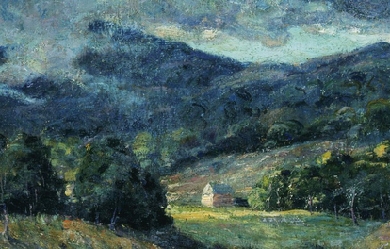
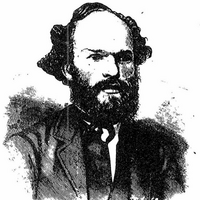
James McIntyre (baptised 25 May 1828– 31 March 1906), called The Cheese Poet, was a Canadian poet. McIntyre was born in Forres, Scotland and came to Canada in 1841 at the age of 14. He worked as a hired hand to begin with, performing pioneer chores that formed the basis of a number of his works. Later, he settled in St. Catharines, Ontario, where he dealt in furniture. There he married and had a daughter and son. He later moved to Ingersoll, Ontario, then a town of 5,000 on the banks of the Thames in Oxford County, the heart of Canadian dairy country at the time. He opened a furniture factory on the river as well as a store which sold furniture, along with such items as pianos and coffins. He was well loved in the community, from which he often received aid in hard times, due in part to his poesy and oratorical skills—he was called on to speak at every kind of social gathering in Ingersoll. The region seems to have inspired him, and it was in celebration of the proud history of Canada, the natural beauty and industry of the region, and especially (as noted above) its cheese, that the majority of his oeuvre was written. The ancient poets ne’er did dream That Canada was land of cream, They ne’er imagined it could flow In this cold land of ice and snow, Where everything did solid freeze They ne’er hoped or looked for cheese. from “Oxford Cheese Ode” [1] McIntyre was uninhibited by minor shortcomings—such as his lack of literary skills. The Toronto Globe ran his pieces as comic relief, and the New York Tribune expressed amusement, but their mockery did not dampen his enthusiasm. He is assumed to have continued writing until his death, in 1906. He published two volumes of poetry: Musings on the Canadian Thames (1884); Poems of James McIntyre (1889). McIntyre was forgotten after his death for a number of years, until his work was rediscovered and reprinted by William Arthur Deacon—literary editor of the Toronto Mail and Empire and its successor the Globe and Mail—in his book The Four Jameses (1927). In recent years a volume of his work, Oh! Queen of Cheese: Selections from James McIntyre, the Cheese Poet (ed. Roy A Abramson; Toronto: Cherry Tree, 1979) collected his poems together with a variety of cheese recipes and anecdotes. However, the greatest boost to his fame probably came from a number of his poems being anthologized in the collection Very Bad Poetry, edited by Ross and Kathryn Petras (Vintage, 1997). This included his masterpiece and possibly best-known poem, "Ode on the Mammoth Cheese Weighing Over 7,000 Pounds," written about an actual cheese produced in Ingersoll in 1866 and sent to exhibitions in Toronto, New York, and Britain: We have seen thee, Queen of Cheese, Lying quietly at your ease, Gently fanned by evening breeze; Thy fair form no flies dare seize. All gaily dressed, soon you’ll go To the provincial show, To be admired by many a beau In the city of Toronto. from “Ode on the Mammoth Cheese” [2] An annual poetry contest is held in Ingersoll, Ontario, to honour McIntyre. The contest is sponsored by The Ingersoll Times and the Corporation of the Town of Ingersoll, and includes a cheese-themed poetry competition. References Wikipedia—https://en.wikipedia.org/wiki/James_McIntyre_(poet)

My life is just what it is...mine. I've done some things that I'm not proud of... I have some regrets... One thing I can say is I'm only human... Live, Laugh, Love... *****These poems are not in order. Some of them were written years ago, some were written recently. I upload them as I find them*****



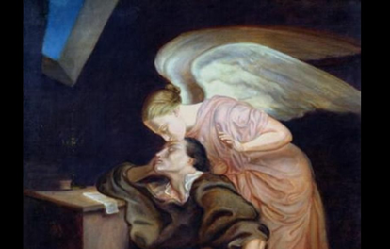



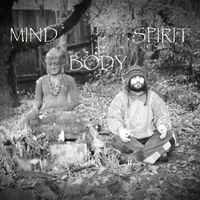
.jpg)
